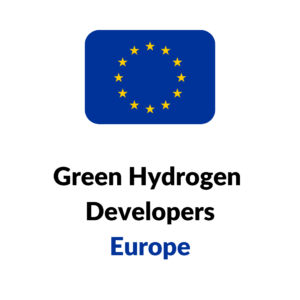Germany has played a key role in driving the EU’s hydrogen schemes and initiatives to support hydrogen development across Europe. The Renewable Energy Agency estimated there are 60 hydrogen projects in operation in Germany with a further 80 in construction, the largest being a 110MW site. Germany plans to undergo significant growth in the hydrogen sector, estimations by the German Hydrogen and Fuel Cell Association predict the country to deliver nearly 28GW of hydrogen energy by 2030. Three of the countries discussed below will play a key role driving this transition and all of the green energy developers can be found on our list of large European green hydrogen developers.
Statkraft – wind, solar, hydro, and hydrogen developer based in Dusseldorf
The global renewables giant is a key player in green energy production, with plans to develop a further 30GW by 2030, an increase of 50%. Statkraft is the largest producer of green energy in Europe and an international leader in hydro, employing over 5,000 people across 21 countries. It is no surprise the German group aims to gain a foothold in the hydrogen market, in May 2023 the firm announced a UK hydrogen JV alongside Foresight and Progressive. The trio aims to develop a host of hydrogen assets such as a flagship 30MW Cheshire site alongside further projects in Liverpool, Winnington, and Middlewich. The firm is also pursuing the development of a green hydrogen plant in Pembrokeshire, Wales. Outside of the UK, Statkraft partnered with Norwegian firm Nel to acquire 40MW of electrolyzers which will be used at Statkraft’s hydrogen sites and used to increase the firm’s installed capacity to 2GW by 2030.
HH2E AG – hydrogen developer based in Hamburg
Headquartered in Hamburg, the firm is committed to exclusively developing green hydrogen from surplus electricity generated by solar and wind assets. HH2E AG is an innovative developer of hydrogen plants including the development of three of its components: a heat storage unit, a power generation unit, and an electrolysis unit combining a high-capacity battery with an electrolyzer. The firm aims to develop 4GW of green hydrogen over the coming years, requiring a €6bn investment in the process which places the group as one of Europe’s leading developers of green hydrogen. HH2E has received support from Foresight to develop a 100MW site in Germany which includes plans to increase capacity to over 1GW and incorporate battery storage. Foresight has also partnered with HydrogenOne to invest in HH2E, resulting in a combined €6m which will be used to develop 5 hydrogen plants and will provide the duo minority equity stake in the company.
RWE – wind, solar, hydrogen, hydro, biomass, and storage developer based in Essen
Alongside Statkraft, RWE is a key global player when it comes to renewable energy production. The group aims to increase its renewable energy portfolio to 50GW by the year 2030, investing an estimated €50bn. Its portfolio consists of solar, hydrogen, batteries, biomass, and gas. With a workforce of 19,000, RWE’s position as a leading developer of green energy is clear. RWE aims to expand its hydrogen operation with over 30 hydrogen projects in various stages of development. In order to accelerate its development, RWE partnered with EnBW to develop a 100MW site at the port of Rostock in Germany. The project will be supplied by nearby wind farms located at offshore and onshore sites. The German group also will partner with Badenova to develop a 50MW hydrogen plant using hydropower supplied by the Rhine. The plant will have the capacity to produce 8000 tonnes of green hydrogen per year once operational, which is estimated to be at the end of 2026.
Image Source: Gustavo Quepon via Unsplash (07.07.23)





